
Leucozona lucorum is a Palearctic and Nearctic species of hoverfly.
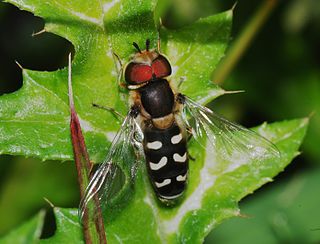
Scaeva pyrastri, common name the pied hoverfly, is a species of hoverfly.

Scaeva selenitica is a species of hoverfly.
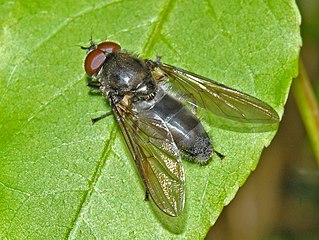
Cheilosia variabilis, common name figwort cheilosia, is a species of hoverfly belonging to the family Syrphidae.
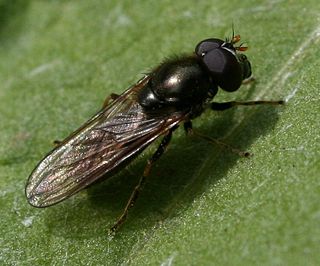
Cheilosia pagana is a Holarctic species of hoverfly. Like most Cheilosia it is black, and because of this may often be overlooked as a hoverfly. One identifying feature is a large red to orange 3rd antennal segment.

Eriozona syrphoides is a European species of hoverfly. A large, bee mimic The thorax has black hairs in the middle and yellow or reddish hairs on the front and hind margins. The scutellum is white to yellow with yellow hairs. The abdomen has white hairs in front, black in the middle and has red hairs at the tip. The wing has a dark patch. The habitat is Picea, Abies forest. It is arboreal descending to feed on white umbellifers, Centaurea, Cirsium, Crataegus, Epilobium, Hypericum, Ranunculus, Sambucus nigra, Sorbus aucuparia, Succisa, Valeriana. It ranges from Fennoscandia south to France and from Ireland eastwards through Central Europe and northern Italy into European Russia and the Russian Far East and on through Siberia to the Pacific coast. The larva feeds on aphids.

Cheilosia grossa is a widespread European species of hoverfly. Adults can be found in spring on sallow catkins and the larvae tunnel in the stems of various thistle species.

Cheilosia latifrons is a species of 'flower flies' or hoverflies belonging to the family Syrphidae subfamily Eristalinae.

Cheilosia nebulosa is a Palearctic species of hoverfly.
Cheilosia ahenea is a Palearctic species of hoverfly.
Cheilosia longula is a Palearctic hoverfly.

Cheilosia psilophthalma is a Palearctic hoverfly closely related and very similar to Cheilosia latigenis, Cheilosia mutabilis and Cheilosia urbana . It is a rare and little known species recorded from Scandinavia, Ireland, Britain, France, Poland, Switzerland, Greece, Montenegro, Serbia, Ukraine and European Russia. Flowers visited include Acer platanoides, Anemone nemorosa, Primula veris, Prunus spinosa and Salix spp. Cheilosia psilophthalma flies in April and May. Open, grassy areas within sparse woodland and unimproved, montane subalpine grassland are preferred habitats. Larvae are recorded as developing in Hieracium pilosella and Hieracium caespitosum.
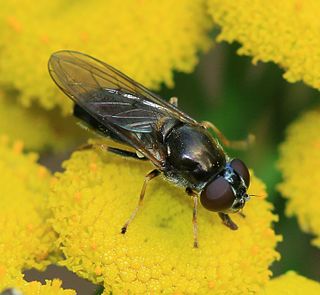
Cheilosia scutellata is a Palearctic hoverfly.

Cheilosia vernalis is a Palearctic hoverfly.

Cheilosia semifasciata is a Palearctic hoverfly.
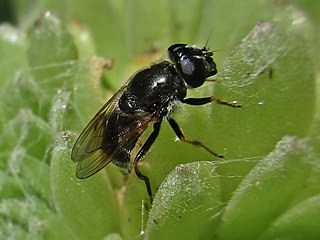
Cheilosia caerulescens is a Palearctic hoverfly.
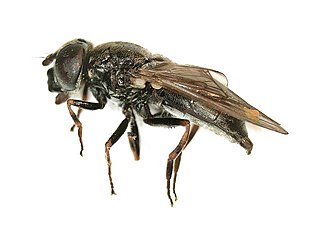
Cheilosia cynocephala is a Palearctic species of hoverfly.
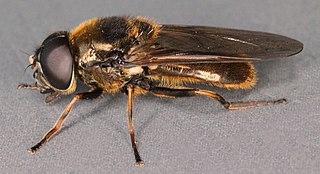
Cheilosia fraterna is a Palearctic hoverfly.
Cheilosia lasiopa is a Palearctic hoverfly. This species was previously misidentified as Cheilosia honesta.
Cheilosia nigripes is a Palearctic hoverfly.

















